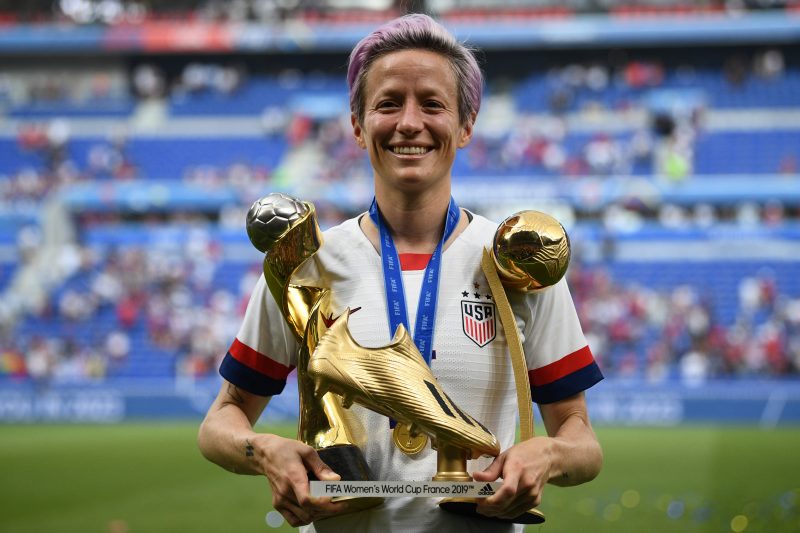Women’s World Cup victory a big win for gay community
Women’s World Cup star Megan Rapinoe said: “You can’t win a championship without gays on your team — it’s never been done before, ever” (FRANCK FIFE)
Washington (AFP) – The US women’s soccer team’s 2019 World Cup victory is an especially huge win for the line-up’s gay players, who have spoken proudly of their sexual orientation in a sport where homosexuality is still a taboo.
“Go gays!” cheered Megan Rapinoe, the US team’s star striker, who was awarded the Golden Boot and Golden Ball and who scored one of the side’s winning goals in the final on Sunday.
“You can’t win a championship without gays on your team — it’s never been done before, ever. That’s science, right there!” she quipped.
The line may have been tongue in cheek, but it still carried a lot of significance, noted Dawn Ennis of Outsports, a media outlet specializing in sexual minorities in sports.
“Being authentic, being yourself, being true, makes you a better person,” Ennis said. “It must make you a better athlete when you are not worrying about hiding a secret about who you are.”
Football federations “need to make sure that players are their authentic selves,” said Ryan Adams, president of the North American Gay Soccer Association, which pushes for the inclusion of members of the LGBTQ community in US soccer.
“It’s in their own interest, when people are their own authentic selves, they are not distracted about being in the closet,” he said.
Rapinoe is far from being the only openly gay member of the team. As well as coach Jill Ellis, five of the American world champions are lesbians, including Ashlyn Harris and Ali Krieger, who are engaged and are soon to marry.
Their defeated opponents, the Netherlands, also had five lesbian players in their line-up.
According to Outsports, around 40 of the women who played in the World Cup are members of the LGBTQ community.
Adams said the trend would only continue to grow: “They showed other countries that have closeted people and athletes that you can be your most authentic self and play among the best. It does amazing things for visibility.”
– Where are the men? –
That visibility — partly due to the 2019 World Cup coinciding with massive Gay Pride parades around the world — was enhanced by the fact that the tournament was the most-watched in the history of women’s soccer.
“I’m motivated by people like me, who are fighting for the same things,” said Rapinoe. “I take more energy from that than from trying to prove anyone wrong. That’s draining on yourself. But for me, to be gay and fabulous, during Pride month at the World Cup, is nice.”
“What’s amazing is that the women who are out are not only out, they are out and loud and proud,” said Ennis. “They are owning their identity and their orientation.”
Does that mean the US will now be ready to totally accept gay players? Adams thinks that it is well on the way, although powerful stereotypes still remain.
“In the US, there is an unfortunate assumption that very good athletes are lesbian. It’s unfair and it’s untrue,” he said.
For men, there is a different standard. French star Antoine Griezmann said recently that male “players do not come out of the closet because they are afraid,” a fact borne out by homophobic comments on social media and chants in the stadiums.
“There are a lot of bad people in football and players can be afraid to go to stadiums and get abused,” Griezmann said in an interview.
“We know there are gay and bisexual men in sports, but there is a double standard,” said Ennis.
The number of professional male footballers around the world still playing after coming out as gay can easily be counted on the fingers of one hand.
And the men’s World Cup last year had no openly gay players on the pitch.
Disclaimer: Validity of the above story is for 7 Days from original date of publishing. Source: AFP.


